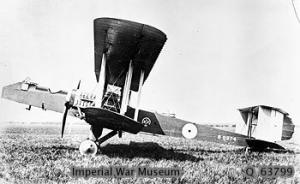
The Vickers Vimy was a British heavy bomber aircraft developed and manufactured by Vickers Limited. Developed during the latter stages of the First World War to equip the Royal Flying Corps (RFC), the Vimy was designed by Rex Pierson, Vickers' chief designer.

The Blackburn Roc was a naval fighter aircraft designed and produced by the British aviation company Blackburn Aircraft. It took its name from the mythical bird of the tales of the Arabian Nights, the Roc. It was operated by the Fleet Air Arm (FAA) and was active during the Second World War.

The Avro 504 is a single-engine biplane bomber made by the Avro aircraft company and under licence by others. Production during World War I totalled 8,970 and continued for almost 20 years, making it the most-produced aircraft of any kind that served in any military capacity during the First World War. More than 10,000 were built from 1913 until production ended in 1932.
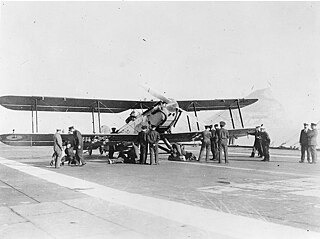
The Fairey Aviation Company Fairey III was a family of British reconnaissance biplanes that enjoyed a very long production and service history in both landplane and seaplane variants. First flying on 14 September 1917, examples were still in use during the Second World War.

In 1919 the Australian government offered a prize of £A10,000 for the first Australians in a British aircraft to fly from Great Britain to Australia. Of the six entries that started the race, the winners were pilot Ross Smith, his brother Keith Smith as co-pilot, and mechanics James Bennett and Wally Shiers, in a modified Vickers Vimy bomber.

The Blackburn Iris was a British three-engined biplane flying boat of the 1920s. Although only five Irises were built, it was used as a long-range maritime reconnaissance aircraft by the Royal Air Force, where it equipped a squadron for four years, being used to carry out a number of notable long-distance flights. The final version of the Iris, the Iris Mark V was developed into the aircraft that replaced it in Squadron service, the Blackburn Perth.
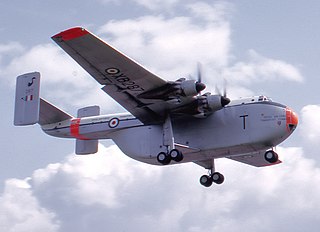
The Blackburn B-101 Beverley is a heavy transport aircraft produced by the British aircraft manufacturer Blackburn Aircraft. It was notably the only land-based transport aeroplane built by Blackburn, a company that otherwise specialised in producing naval fighter aircraft.

The Avro 549 Aldershot was a British single-engined heavy bomber aircraft built by Avro.
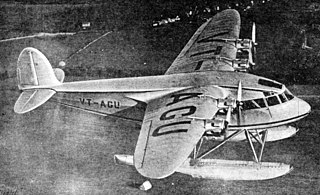
The Short S.22 Scion Senior was a 1930s British four-engined nine-passenger floatplane built by Short Brothers.
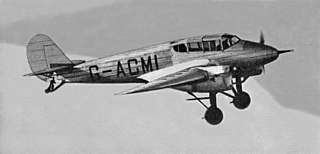
The Blackburn B-1 Segrave was a 1930s British twin-engine four-seat touring aircraft built by Blackburn Aircraft.

The Blackburn T.3 Velos was a 1920s British two-seat coastal defence seaplane built by Blackburn Aeroplane & Motor Company Limited, Brough Aerodrome and the Greek National Aircraft Factory.

The Airco DH.16 was an early British airliner designed by Geoffrey de Havilland, the chief designer at Airco. It accommodated a pilot plus four passengers, and was operated from 1919 to 1923.

The Armstrong Whitworth Atlas was a British single-engine biplane designed and built by Armstrong Whitworth Aircraft. It served as an army co-operation aircraft for the Royal Air Force (RAF) in the 1920s and 1930s. It was the first purpose-designed aircraft of the army co-operation type to serve with the RAF.
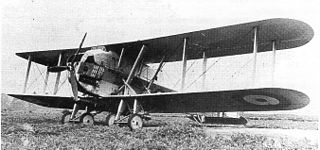
The Blackburn T.4 Cubaroo was a British prototype biplane torpedo bomber of the 1920s. Built by Blackburn Aircraft and intended to carry a large 21 in (533 mm) torpedo, the Cubaroo was claimed to be the largest single-engined aircraft in the world at the time of its first flight.

The Vickers Vendace was a 1920s British trainer aircraft. It was originally designed as a floatplane trainer for the Royal Air Force.

The Supermarine Sea Eagle was a British, passenger–carrying, amphibious flying boat. It was designed and built by the Supermarine Aviation Works for its subsidiary, the British Marine Air Navigation Co Ltd, to be used on their cross-channel route between Southampton, the Channel Islands and France.

The Sopwith Wallaby was a British single-engined long-range biplane built during 1919 by Sopwith Aviation Company at Kingston upon Thames.

The Blackburn T.R.1 Sprat was a British single-engine two-seat biplane trainer, built in 1926 for advanced training, deck-landing and seaplane experience. Just one was built.

Hounslow Heath Aerodrome was a grass airfield, operational 1914–1920. It was in the London borough of Hounslow, and hosted the British Empire's first scheduled daily international commercial flights, in 1919. The site today includes the main remaining part of Hounslow Heath.
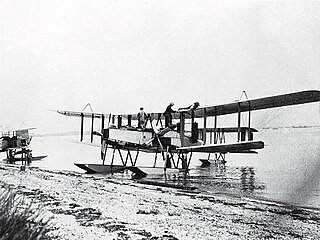
The Blackburn G.P seaplane,, was a British twin-engine reconnaissance torpedo floatplane of the First World War, built by the Blackburn Aeroplane and Motor Co Ltd.
